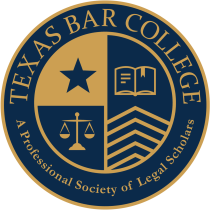Make the EEOC Mediation Process Work for You
If you've filed an EEOC charge with the Equal Employment Opportunity Commission (EEOC), one of the things that may happen is you'll receive an Invitation to Mediate. The document asks whether you're interested in voluntarily mediating your case with the EEOC's Mediation Unit. If both parties, the employee (charging party) and the employer (responding party), agree to mediate their case, the EEOC will move it from their investigation unit to the mediation unit.
What is Mediation?
Mediation is a process by which a third-party mediator who doesn't have a vested interest in the dispute sits down with both parties and tries to arrive at an agreed resolution or settlement to the EEOC charge. Mediation is voluntary, which means both parties agree to sit down and see if they can work out their differences. This is different from arbitration, which is typically binding and takes the place of a jury trial.
What Happens During EEOC Mediation?
Once both parties agree to mediate, the case is removed from the investigation unit, and the EEOC's Alternative Dispute Resolution (ADR) unit, also known as the Mediation Unit, contacts both sides to schedule a date for mediation. The mediation process starts with a General Session in which the mediator introduces themselves, explains the process, and gives both parties a chance to briefly explain the dispute from their point of view.
After the General Session, both parties are separated and kept separate for the bulk of the process. The mediator will go back and forth between the employee's and the employer's rooms doing shuttle diplomacy, trying to find common ground. The mediator will come into the employee's room and ask what the employer could do to resolve the dispute. This might include a payment of some amount of money if the employee was wrongfully terminated, or an agreement not to give a bad reference if a prospective employer contacts the employee.
If the parties are able to reach an agreement they both agree to, the agreement will be documented in a settlement agreement. The EEOC will prepare a document, and the parties may have a longer form document. Once the documents are signed, the funds will be provided to the employee if that was part of the settlement agreement, and the EEOC charge will be dismissed.
Do You Need an Attorney at EEOC Mediation?
You are not required to bring an attorney to the mediation, but it is advisable to do so. The employer will likely bring an attorney, and just to protect yourself and ensure you're not taken advantage of during the process, it's recommended to bring an employment attorney with you if you can do so.
Conclusion
The EEOC Mediation process is a voluntary process by which both parties try to work out their differences. If the parties are able to reach an agreement, the EEOC charge will be dismissed, and the funds will be provided to the employee if that was part of the settlement agreement. While you're not required to bring an attorney, it's advisable to bring an employment attorney to ensure you're not taken advantage of during the mediation process.









